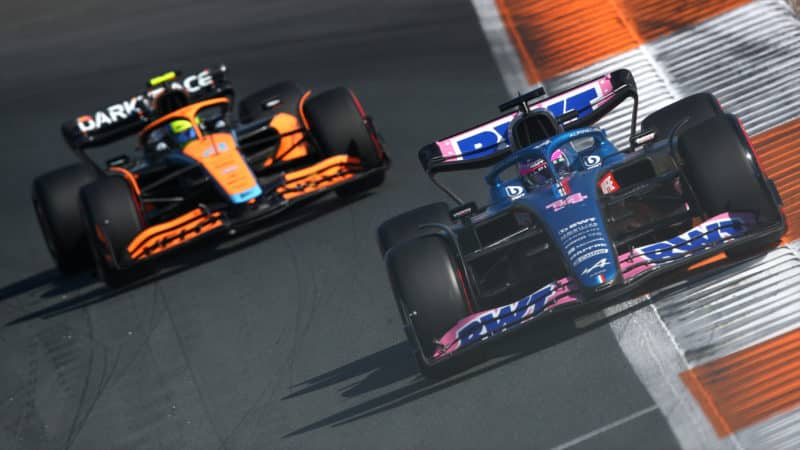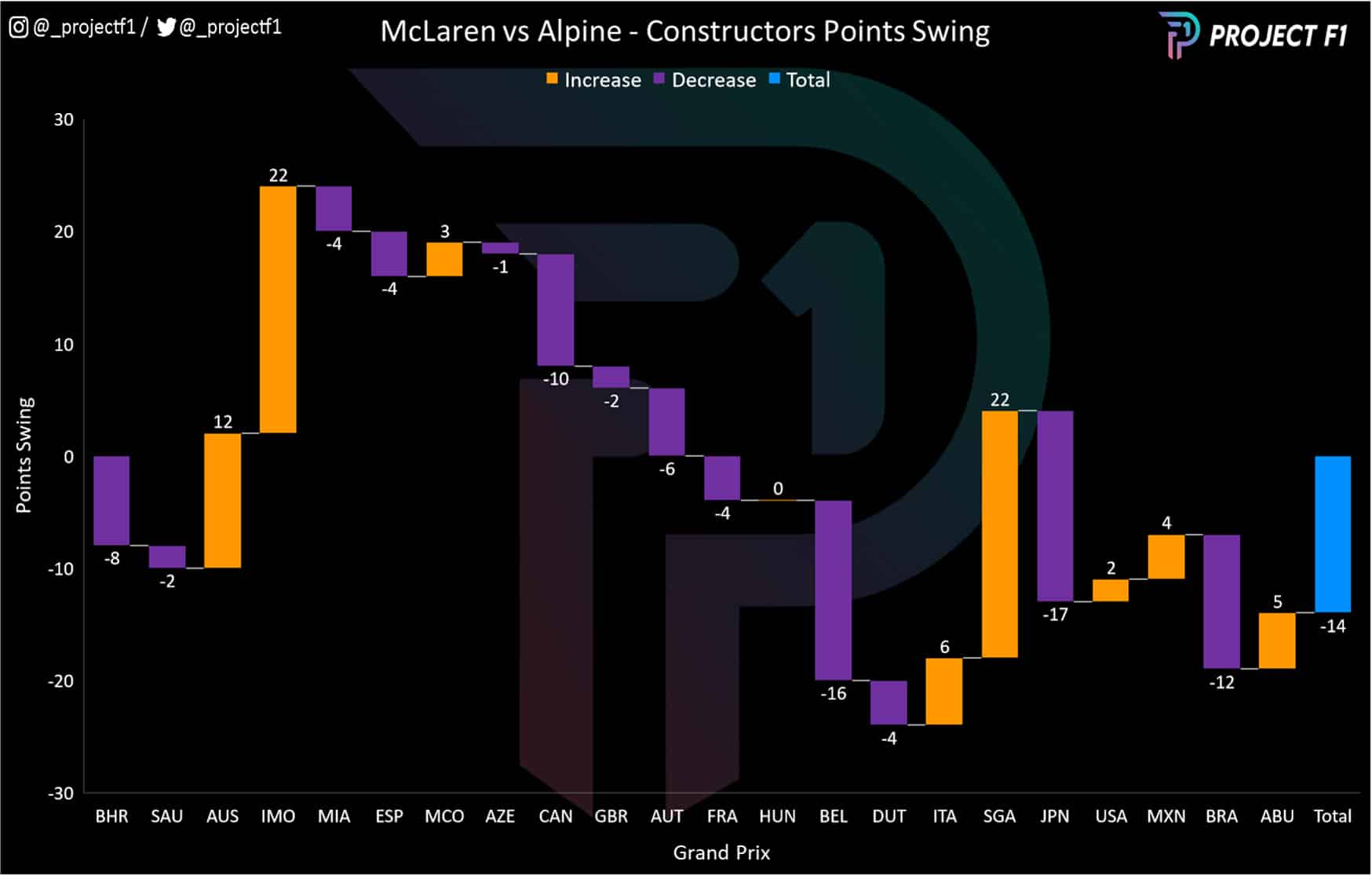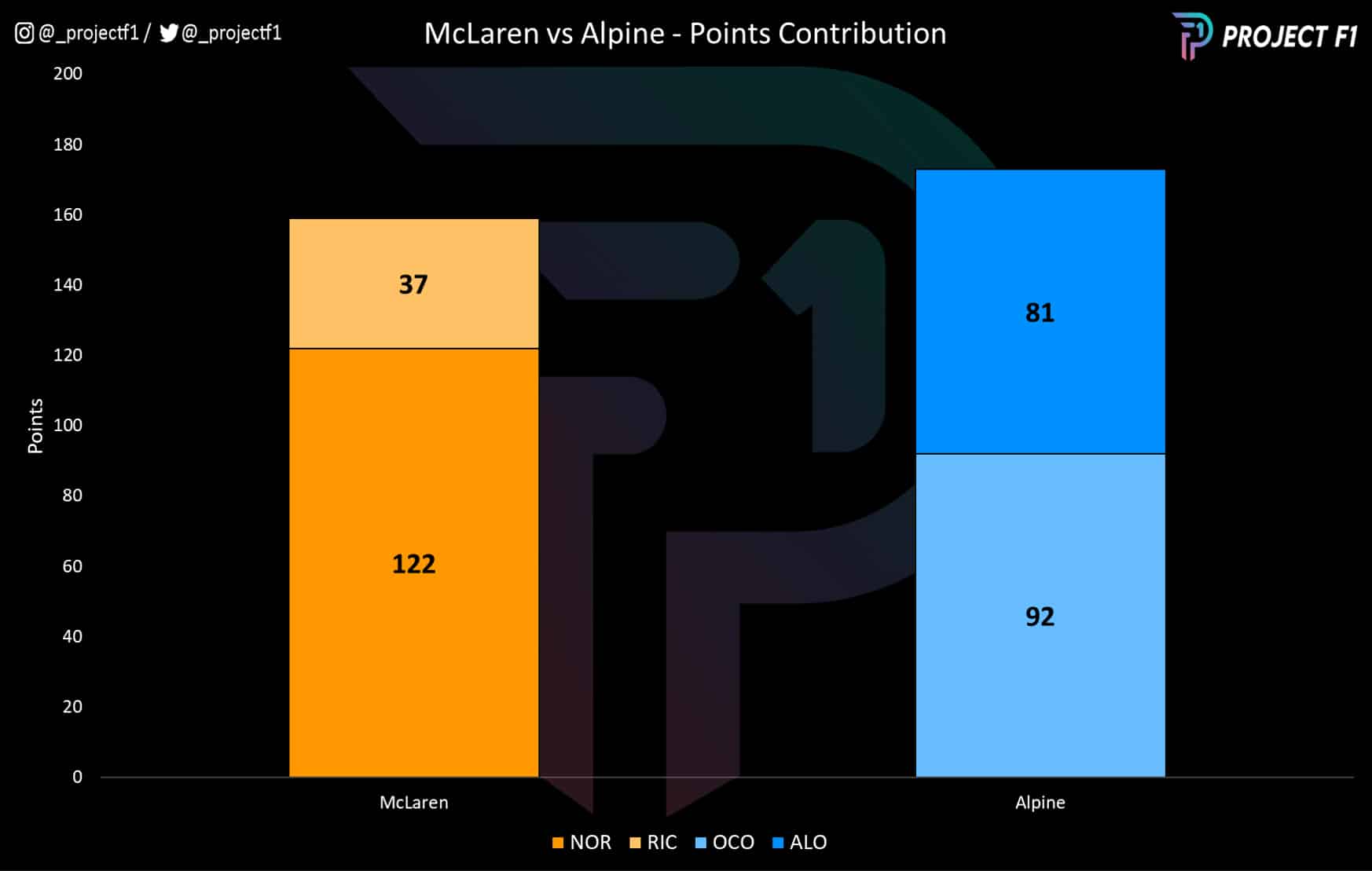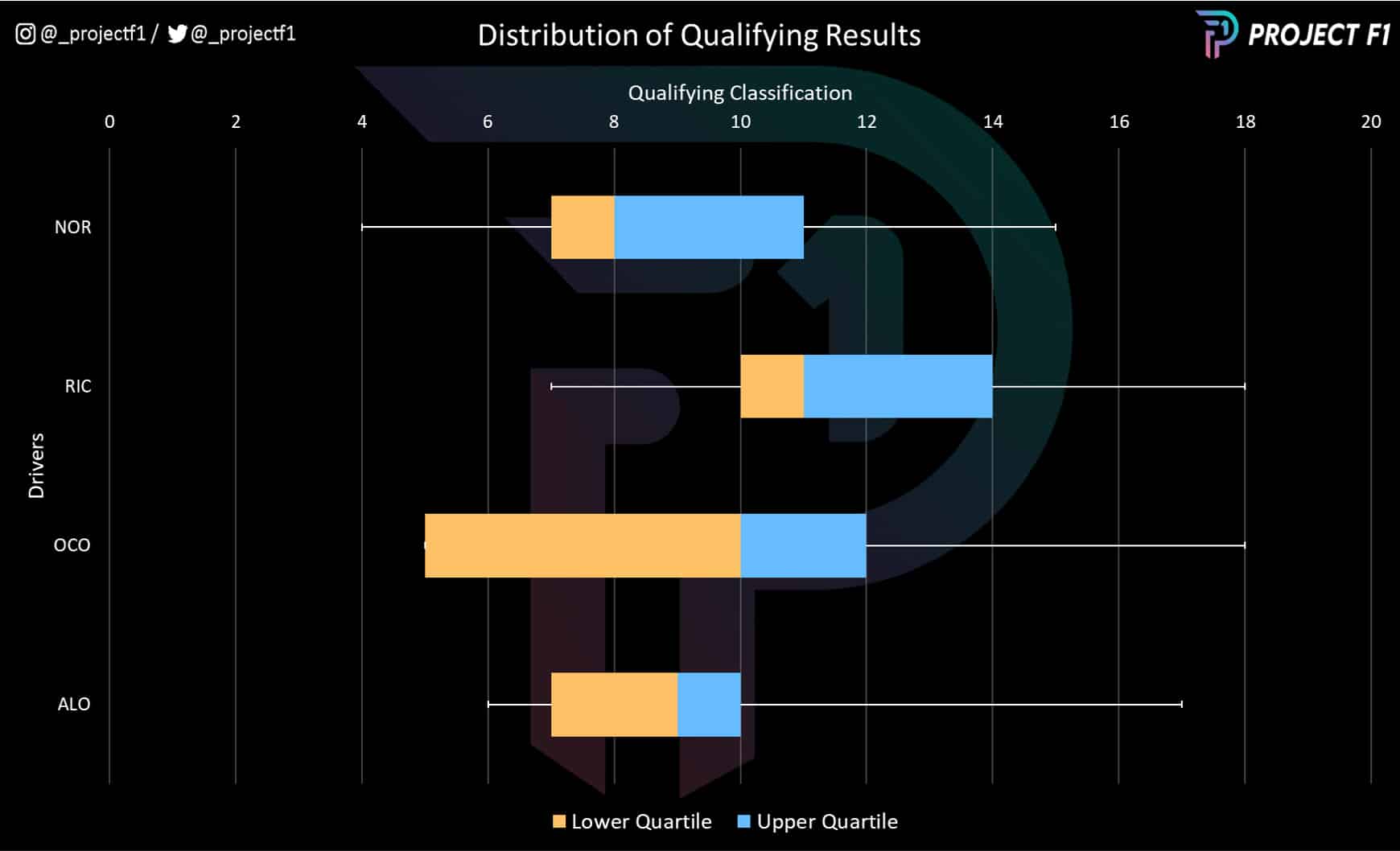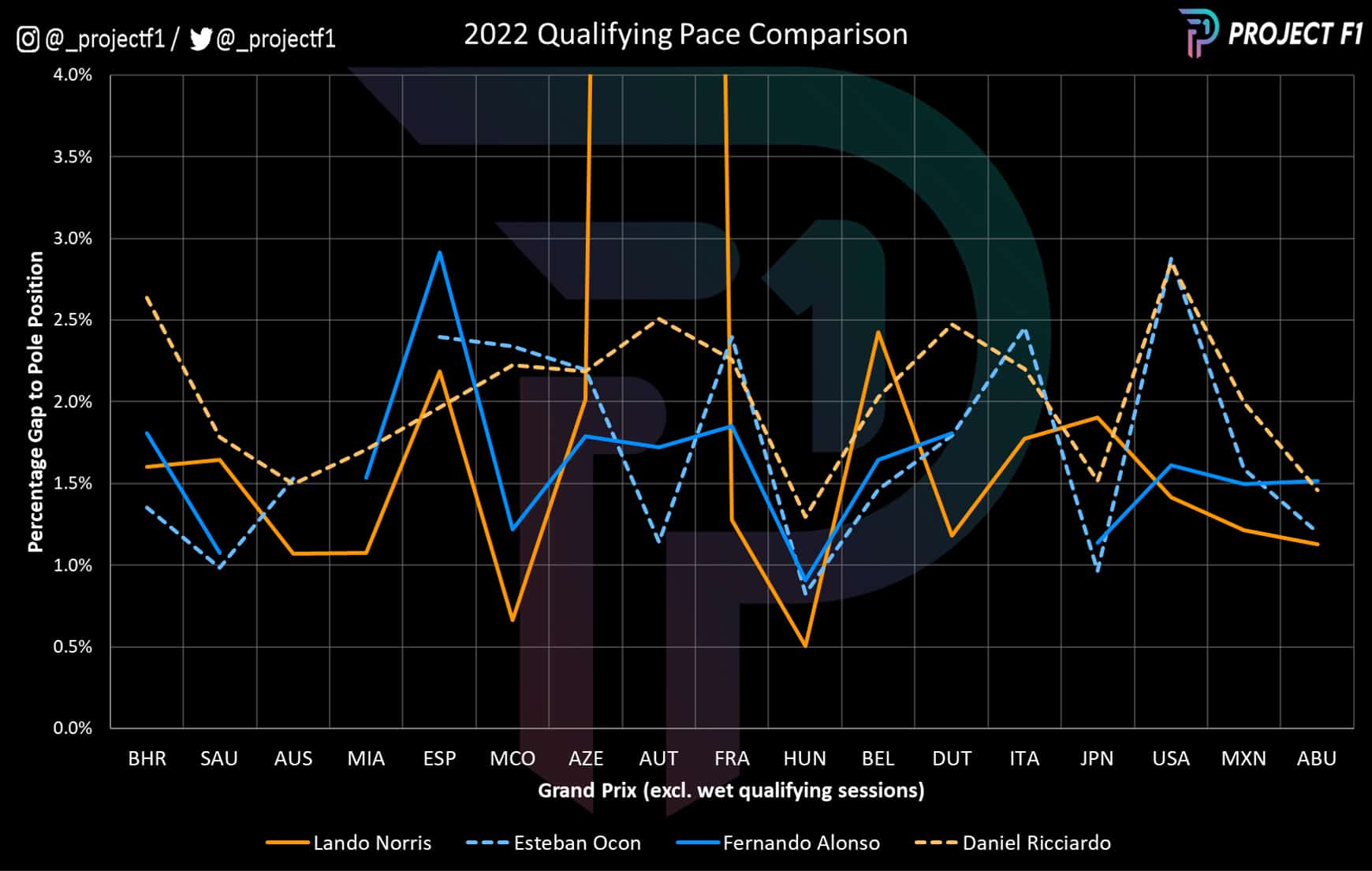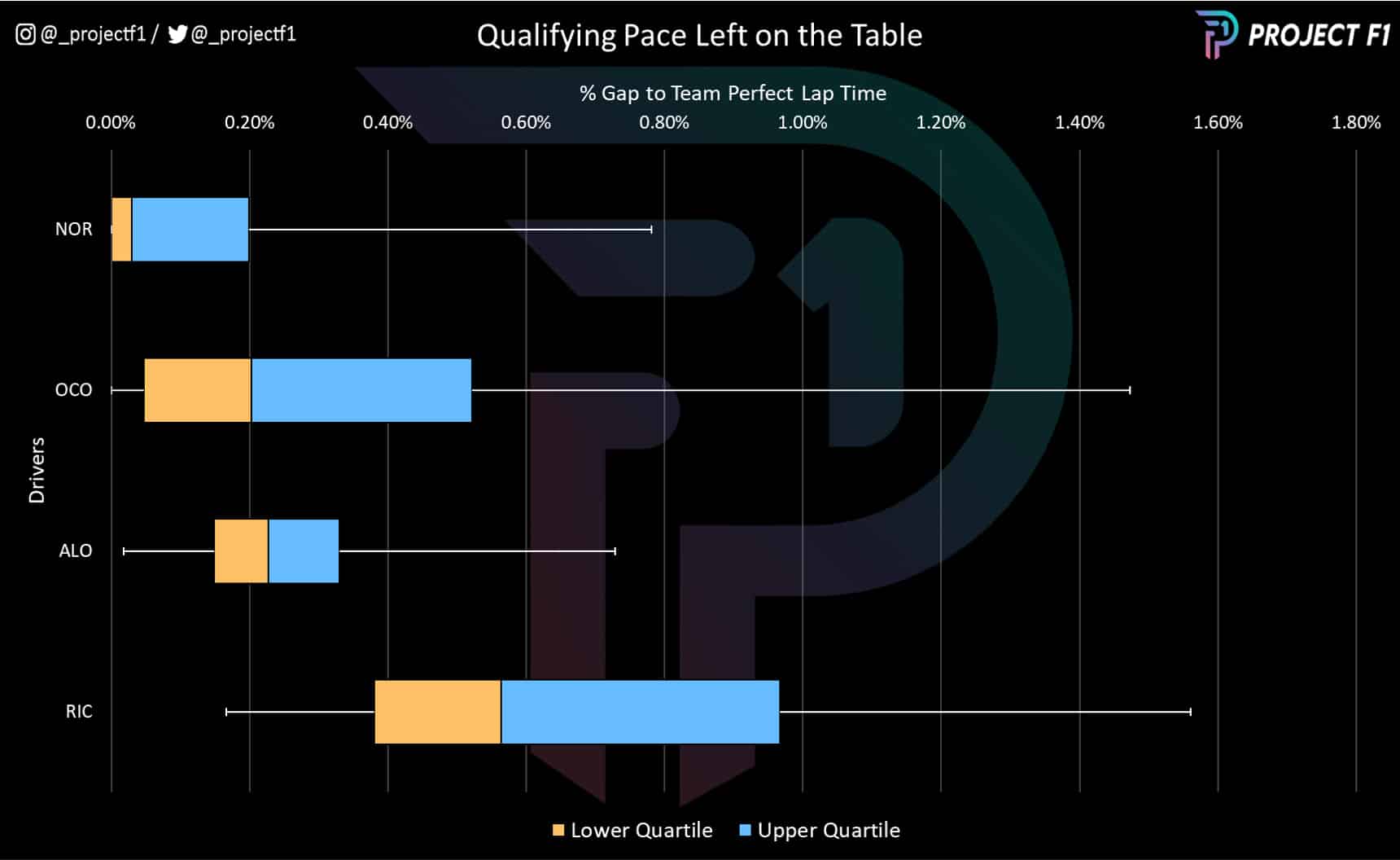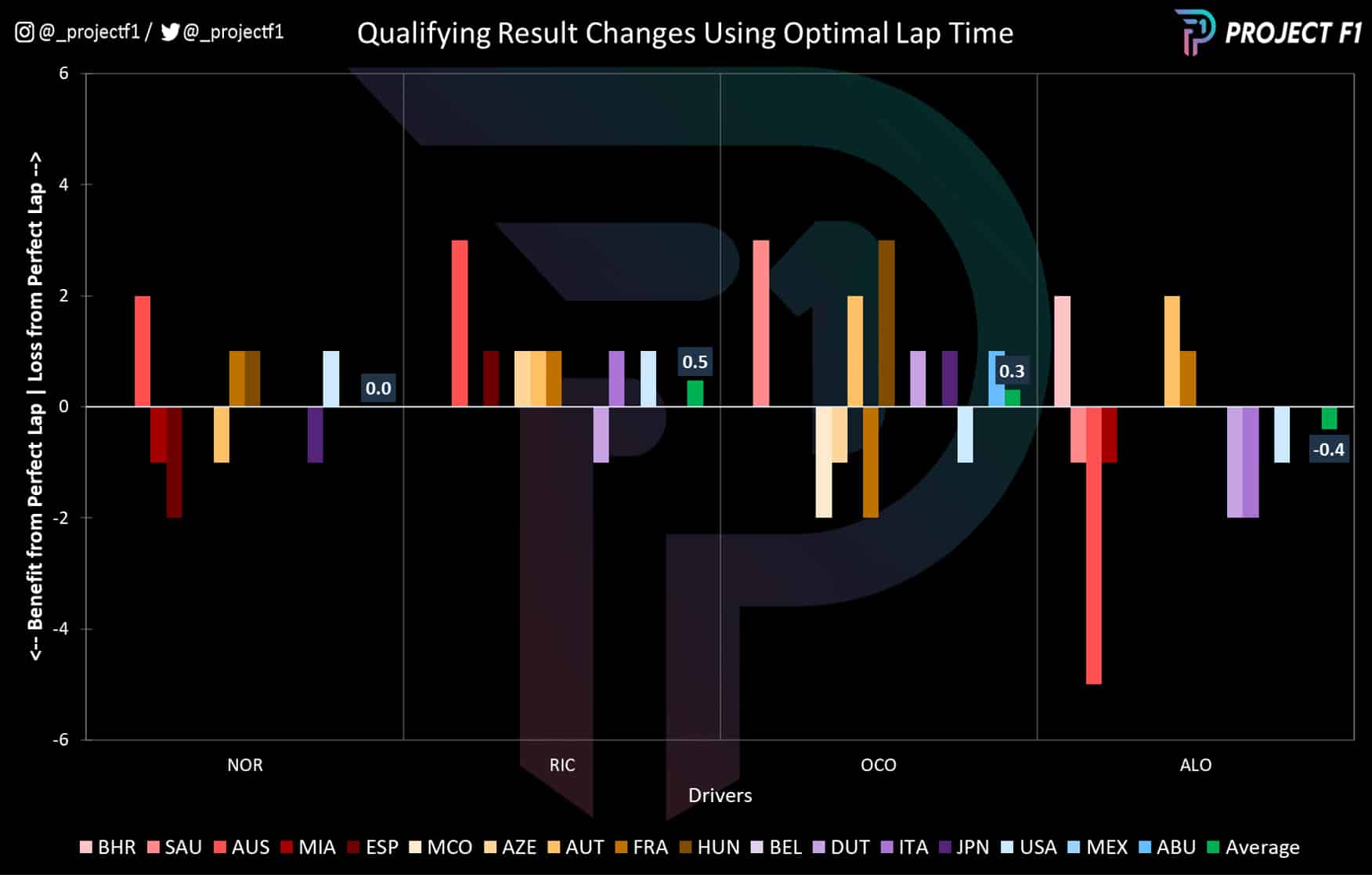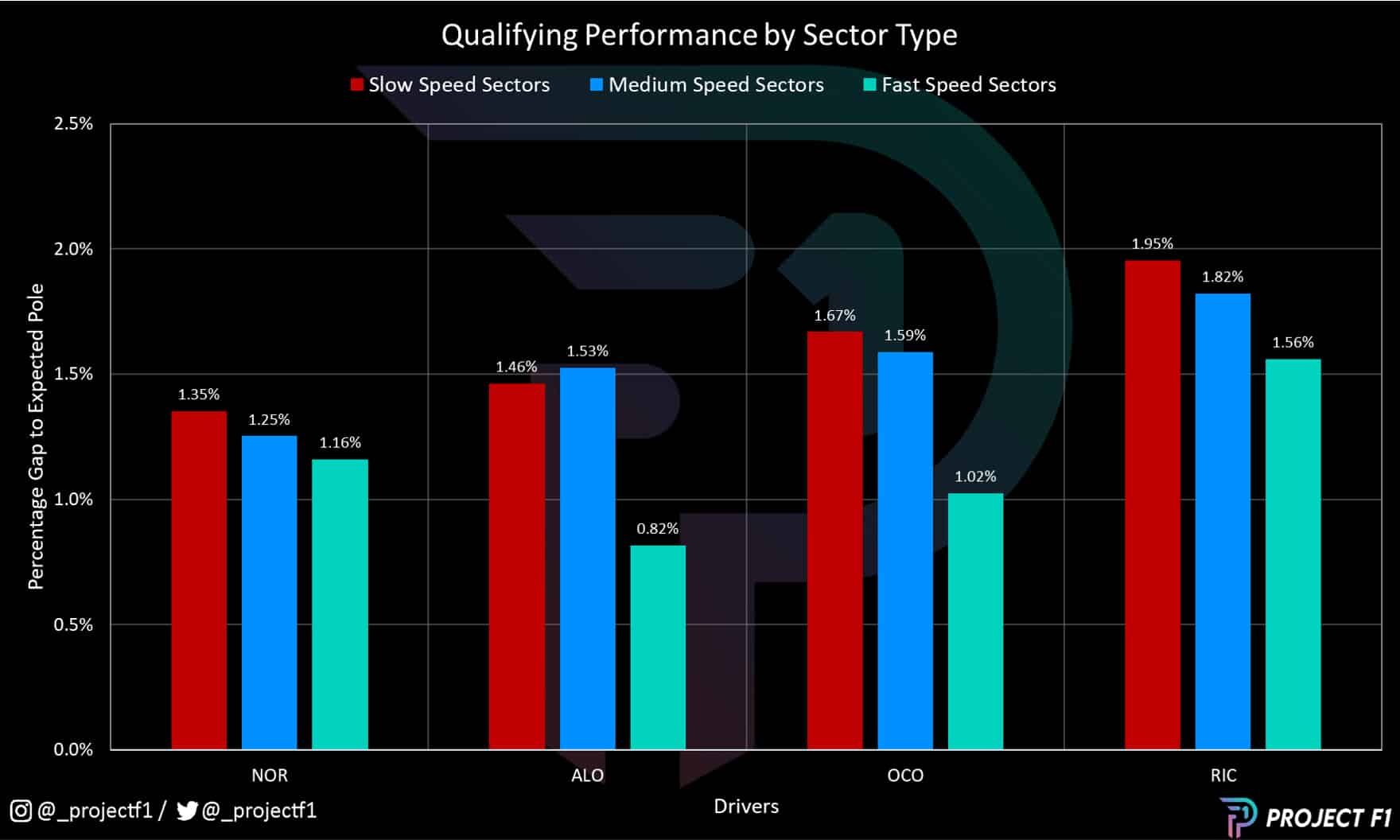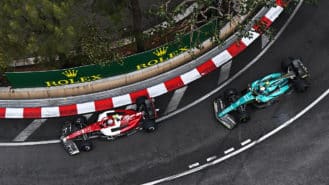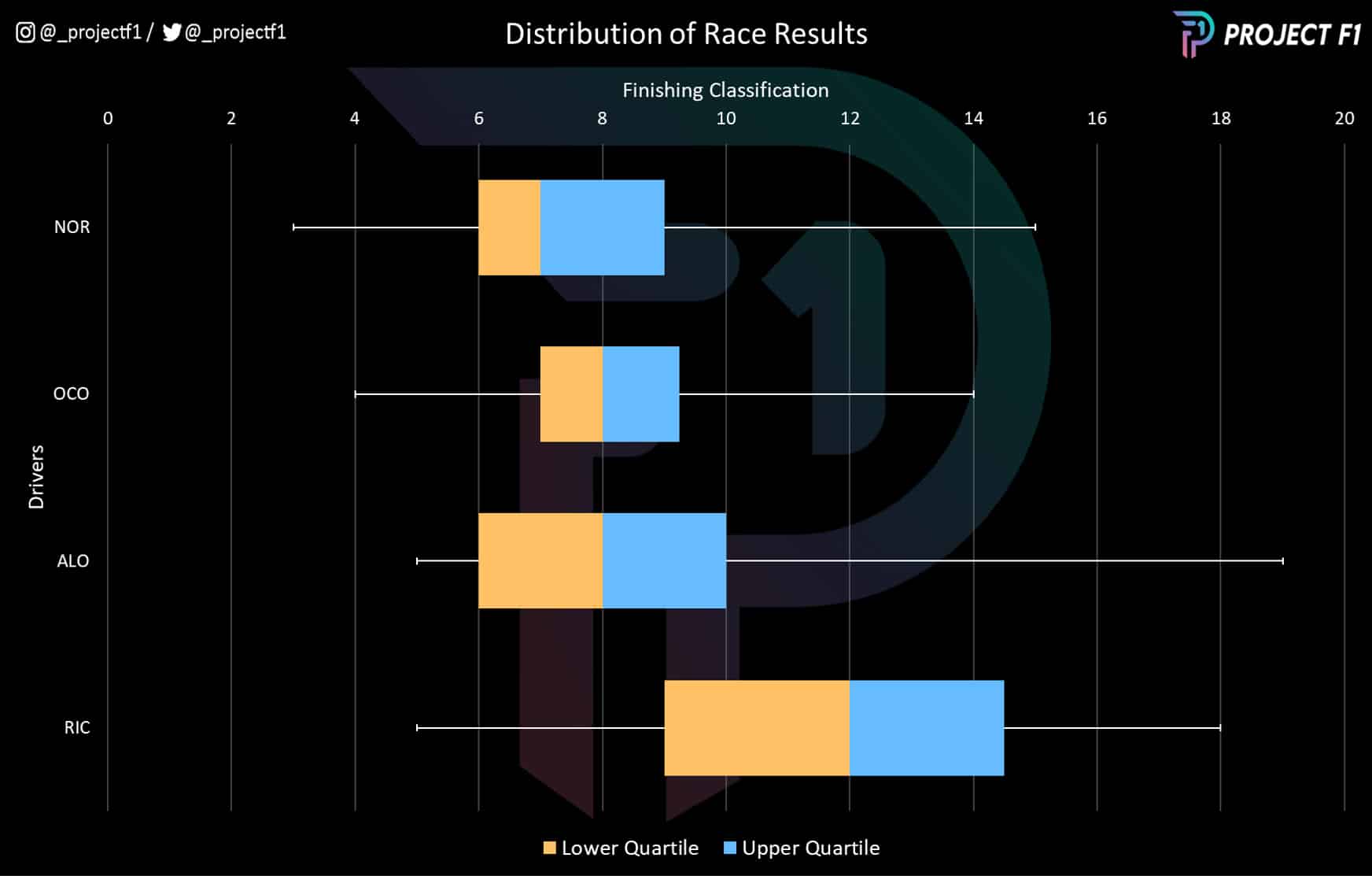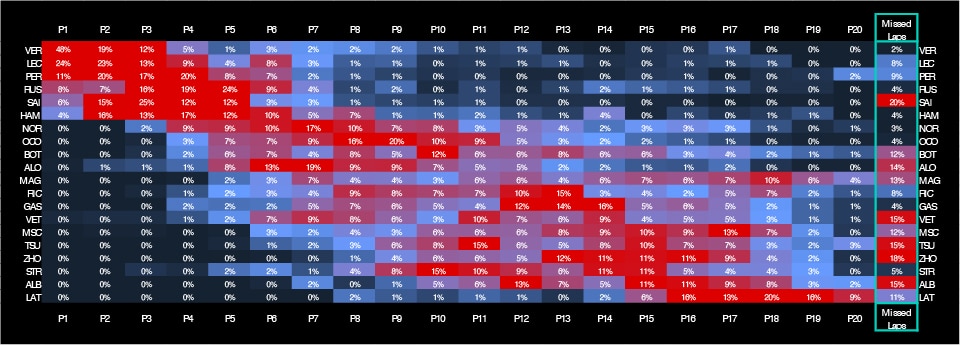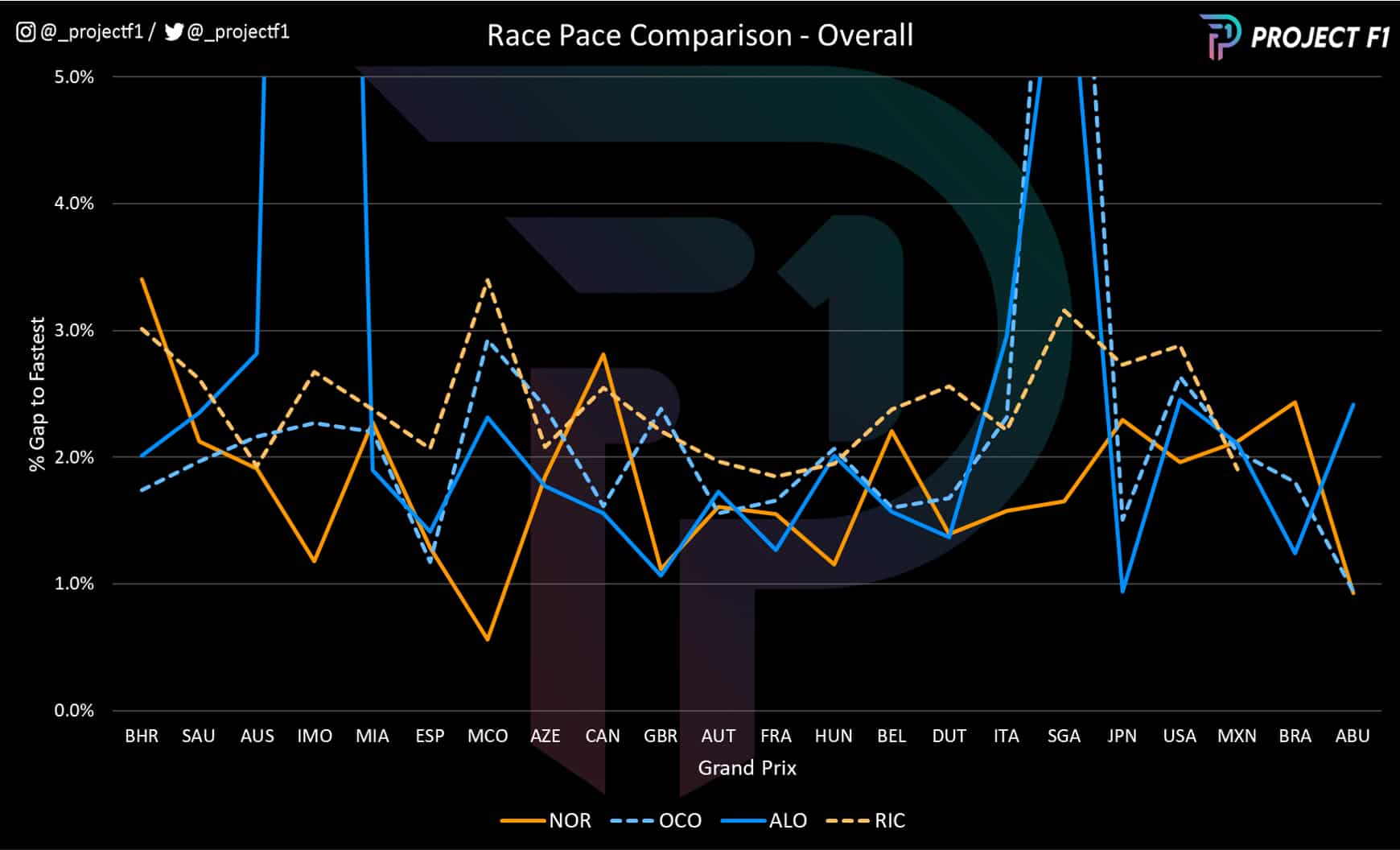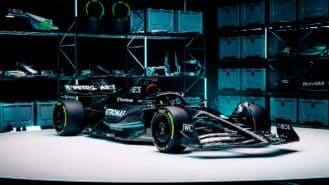But from here Alpine found its groove, as its development programme bore fruit and race by race it chipped away at McLaren’s lead with the Canadian and Belgian races being particularly helpful due to their demands on power suiting the Alpine’s top speed design philosophy.
However, another set of Alpine retirements over the Italian and Singaporean races gave McLaren a brief glimmer of hope before much of this was taken away thanks to a strong double points finish from the Alpine duo in Japan. But things remained tight going into the final races of the season. Any more mechanical issues and McLaren could have found itself retaining P4 for another year.
But it was McLaren left packing up early towards the end of the season at the penultimate race in Brazil. Opening lap contact ended Ricciardo’s race, while an unwell Norris was involved in a clash with Charles Leclerc, suffering steering problems before his car lost power mid-race.
This gave Alpine the headroom it needed going into the final race of the season to put one hand on P4. All it realistically needed to do was see the chequered flag.
A tale of two McLaren drivers
Chart 2 Points Contribution
Just a glance at the chart above, showing how many points each driver contributed to the team total, reveals Ricciardo’s tough season.
Lando Norris delivered the lion’s share of McLaren’s points. Alpine had a reasonably even contribution among both their drivers to the team outcome.
Alpine’s strong driver combination — albeit hampered by reliability — was a more favourable combination than one over-performing and one under-performing driver and this merits examining in more detail.
Top 10 out of reach for Ricciardo
Chart 3 Qualifying Results
Chart 3 displays the spread of qualifying outcomes after taking out rain-affected sessions. The white line shows the full range of results. The coloured sections show the middle 50% of results.
Norris was the best qualifier when taking the median average, and secured the highest grid position during the year but this was offset by his team-mate whose median qualification was outside the top 10.
This is contrasted by Alpine which had both of its drivers in the top ten in an average race.
Where McLaren struggled
Chart 4 Qualifying Pace Comparison
In term’s of all-out pace, Norris’s performances are most striking and it is notable that his best laps came at Monaco and Hungary while his worst were in places like Belgium and Austria (where technical issues were directly responsible for Norris’s pace, Ricciardo also struggled more than usual that weekend).
The commonality here is the reliance on power and the impact of drag – serving as confirmation for the car’s performance difficulties.
Ricciardo was consistently lagging his team-mate when it came to pace over a single lap. There were a few moments of outperformance but they were nothing to write home about.
Alpine’s performances were a more topsy-turvy, with Alonso the more consistent of the two. When Ocon was fast he was fast, but his pace was irregular.
Interestingly Alpine tended to have its best performances where McLaren would struggle, on the power-based circuits, but the car was still able to perform well at tracks such as Hungary, indicating that the Alpine was a car that had a wider operating window. This, combined with a stronger driver duo gave Alpine the leg-up over McLaren.
Pace left on the table
Chart 5: Gap to perfect lap
Looking at how close each driver got to their ‘perfect’ lap (calculated by adding up the best sector times recorded in their car). Norris is the standout performer, based on his median average.
Part of this comes down to his strong performances but part of it also comes down to the lack of competition from his teammate. Norris’ sectors make up most of McLaren’s ‘perfect’ lap times.
Out of the rest of the field, Alpine’s duo had the closest median gaps to the team’s ‘perfect’ lap. This indicates that both drivers were closer to peak performance. Alonso achieved this with more consistency compared to Ocon thanks to the tighter interquartile range. Ricciardo continues to sit as an outlier.
Ricciardo starting at a disadvantage
Chart 6 Implications on Grid Position
Chart 6 looks at the implications of not achieving peak performance. While all drivers have their better and worse races, Ricciardo’s performance stands out once again.
Across almost every race with the exception of Belgium, Ricciardo would have lost grid positions had all drivers achieved their best laps. In other words, even if Ricciardo was getting closer to his ideal lap time, it wouldn’t be enough to compensate for the improvement from his competitors.
High-speed sections suited Alpine
Chart 7 Qualifying Breakdown by Sectors
It’s clear where the Alpine/McLaren performance differential lay in Chart 7, which compares performance in different types of sectors. Each driver’s gap to the pole time is shown for slow-, medium- and high-speed sectors.
Alpine has the clear advantage in the high-speed sectors but Norris was faster in the slow- and medium-speed corners.
